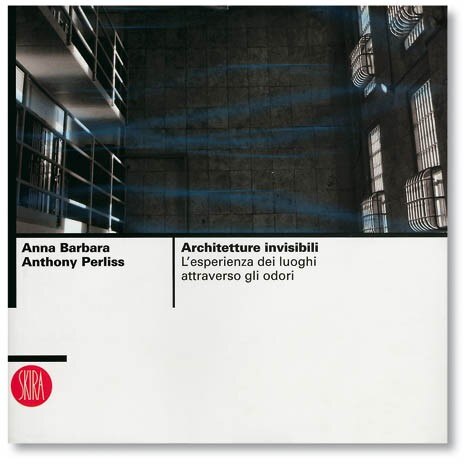Architetture invisibili. L’esperienza dei luoghi attraverso gli odori, Anna Barbara, Anthony Perliss Skira, Milano 2006 (pp. 224 euro 33,00)
Despite its apparent inability to generate a proper three-dimensional picture, the sense of smell can reveal the nature of a place far in advance. Albeit inadvertently, we can pass through invisible situations and establish new perimeters and paths, even in the absence of walls, allowing the relationship between interior and exterior to be constantly updated by the smells that linger in the air. All this creates a very new picture that, paradoxically, would be inadequate to describe as three dimensional. More precisely, it is a dynamic flow of molecules that transports information and sensations. These are quickly received and elaborated by our sense of smell and brains, and then stored in a vast database that codifies even the slightest nuances. This sort of memory archive triggers sudden déjà vu feelings, smells that conjure up moments in space and time that may even belong to our remotest past. Having said this and legitimised the design value of the sense of smell, we can quite rightly wonder what the smell of architecture is; or rather, if it is possible to design the smell of a place. Anna Barbara and Anthony Perliss try to answer these questions and embark on a journey through the architecture of smells and the smells of architecture. They start by defining the nose as a complex measuring instrument, a machine made of cavities, turbinate bones, spirals, mucous and sensorial receptors. The nostrils are “loading bays of air and smells” that use electrochemical messages to transfer information along the olfactory nerves. The first part of the authors’ journey addresses death and two simultaneous desires: removing the smell of death, so cruel and violent during the putrefaction process, and the urgent desire to venerate our dead with ritual and emotion. From Egyptian embalming to burial and cremation, the processes of crystallising and distancing death precede the surrounding architecture that becomes a new abode. Death and its odour, unavoidable and unacceptable, are factors that unwittingly increase our desire to surround ourselves with perfumes, perhaps plundering the olfactory material stored in our memories and magnifying it. Even in our everyday lives, when we may not be dealing with death, unpleasant smells can prompt design reactions. Like Gaetano Pesce, who in his design for the Casa di Bahia imagined rubber walls that could vibrate like waves in the sea; he decided to replace the repellent ammonia used in the processing of natural rubber with juniper syrup. The experiment was merely a technical expedient used to remedy an objectionable smell. But it nonetheless generates new sensorial experiences for those living in the house. In that sense, it is certainly more interesting to determine a place via its smell: the smell of wax and incense belongs to the church nave and the smell of disinfectant to hospital corridors. In these cases, the smells are a consequence of a function and escape a design definition, taking on the role of “fragrant icons”. Osmic Gate is a project by Clino Trini Castelli for the entrance to a golf club featuring a path of Norwegian pine impregnated with creosote – a moth-repellent but also a smell that belongs to the imagery of old railways, because the wooden sleepers between the tracks were soaked with it. Although not always on a conscious level, sensorial design can often be a product of contaminations between seemingly distant worlds. To better convey this, the authors organised unusual appointments, bringing together apparently distant worlds and stimulating unpredictable dialogues on the magic of smell. For example, the architect Philippe Rahm met the perfumer Maurice Roucel inside the Parisian catacombs; the designer Elizabeth Diller met fragrance expert Roger Schmid in New York’s Meatpacking District, the old slaughterhouse area; and legendary landscape artist Petra Blaisse met Martin Gras, the inventor of the Cerruti 1881 perfume, in a windmill in Zaanse, Amsterdam. The resulting considerations hover between what is scientifically proven in the laboratories and what is stored unknowingly in the memory. The book describes a vast range of synergic episodes featuring places and smells, and these dialogues become starting points in the search for new design ingredients, in which the language of perfume is superimposed on the architectural gesture in a sort of sensorial Esperanto. And so we continue in the wake of Richard Neutra’s conception, who in 1949 wrote: “We ought to focus as much attention as possible on all the non-visual aspects of the environment.” Smells included.
Massimiliano Di Bartolomeo Architect


